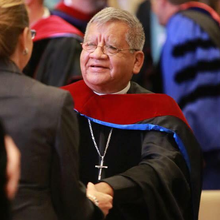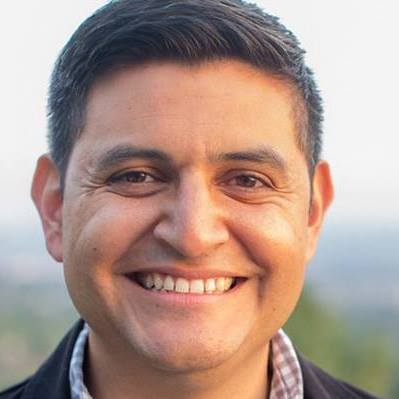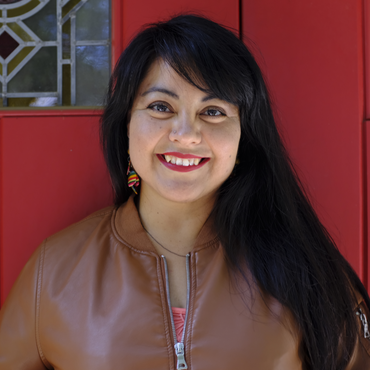Lessons on Developing Young Leaders: Work Towards Shifting Perspectives and Implementing Change-sustaining Practices
Key 1 of four keys on how to develop young people as leaders in the church from six seasoned Latin@ leaders whose congregations and parachurch groups are leadership incubators for the young people in their communities.
Growing a Brighter Tomorrow in Gulfton, 2018, Rahmaan Statik
Read the summary and find links to the other 3 keys.
Key 1: Work Towards Shifting Perspectives and Implementing Change-sustaining Practices

Rev. Alejandro Montes: In the early 80’s I was called to serve in an Episcopal Church in Houston, Texas. The congregation was located in an area filled with young people who were gang members, and they went so far as to damage the church building and my car. Understandably, the members of the congregation were not very receptive to the young people in the community. However, the more I got to know the community and its struggles, the more I began to understand that my role as a leader was to maintain an open heart and mind, uphold compassion as a guiding value, and be willing to serve everyone – regardless of whether or not they were members of my congregation.
My ministry became a 24/7 affair, as building young leaders in the church began with first getting the youth in the community to trust the church! Being new to the area, I was intentional about spending time with the young people in the community as I visited their schools, invited them to our home, and sought ways of living life alongside of them by being present and available to them. This began to gradually build their trust towards me and my family, and they were open to our conversations about faith, biblical teachings, and reflecting on the choices they were making in life. I also began volunteering as a chaplain with the local police department. This opened doors for the local police to get to know and trust me; this came to the point that the police would encourage the young people whom they were having trouble with to seek me out to speak with me. This level of involvement in the lives of youth is what began shifting perspectives in me, the community, and ultimately the congregation.

Priscilla Rodriquez: In my context, I have noticed that each generation of Latinx young people have acquired more and more education. Millennials are moving in professional circles and have certain expectations of how organizations should function; however, the church at large has remained unchanged. This has caused a generational gap in the church. Young people think they don’t need older people; and older people want to hold on tight to the methodologies, techniques, rituals, and practices that they have relied upon for decades to reach others with the Gospel. As a leader, I have learned that the key to adapting my perspective about the youth’s involvement in the church has been to remain close to young people and learn from them about their ideas, desires, and needs. It takes practicing acompañamiento (walking alongside of) versus going in front of them, or behind. When I focus on creating safe spaces for honest conversations through close relationships, young people feel free to share. They want to know, though, what I will do with what I hear. They want to know that I will honor what they have shared by creating pathways for implementation in congregational life.

Marcos Canales: I would start by asking why churches want to see youth being involved. Is it out of a maintenance mode? Crisis mode? Status quo mode? The answer to this question is key to guiding our motivations, actions, and commitments. It is what makes the difference between being reactive or proactive. I’ve observed that people begin to concern themselves with what the church is doing on behalf of young people, only when their own children reach this age and they themselves begin to face the challenge of dealing with the reluctance of their children to attend and participate in church life.
Shifting perspectives and integrating change-sustaining practices entails first defining the identity and values of the congregation. Who are the people you are serving? Are these first-generation Latinos? More acculturated populations? A mixture? This then leads to the how question. How will we serve them? The answer, and therefore the practices, will depend on which demographic sector we are serving. Our values as a congregation also play a role in what practices we are willing to integrate or not. For example, when I hear people saying, “Los jóvenes son los líderes del mañana” (youth are the future leaders), this signals that young people are not really a priority today, and their needs will be put on the backburner.
Sometimes it takes a very different community getting involved to propel us into change. Such was the case of the Jewish community who translated the Hebrew Bible (i.e., the Septuagint) into koine Greek in Egypt. They not only did the work of translation, they also fulfilled the need of the current generation of Jews in the diaspora who needed to know about their faith in the midst of a land that was dissimilar from their roots and did not have one distinct deity. If we are to reach the younger generations, we too need communities that teach us how to adapt not only to the language needs of this generation, but also to the required adjustments in our hermeneutics, theology, and ecclesiology so that we may reach them effectively. It requires leaders who are in love with Jesus and His Kingdom, rather than church structures or traditions. It requires leaders who are open to learning and understanding who our youth are so we can best support them. I’ve found that many pastors have benefited from learning in the courses I teach about the developmental stages of young people, not from a linear perspective as most academic sources portray, but rather from the perspective of the lived reality of our Latinx youth. They often experience the challenges of adolescence (e.g., education, sexuality, identity formation) alongside the responsibilities of being an adult as they share in the financial and childcare obligations of their families. Our congregations have the opportunity and responsibility of coming alongside Latinx youth and supporting them in their everyday needs, while also nurturing their faith and leadership development.

Anyra Cano: The need to shift perspectives depends on how the current church leaders were shaped and the ministry models they learned. In my case, I was blessed to have positive experiences growing up as part of those who served in church leadership roles. At age 13 I felt called to ministry, and the pastor in the congregation our family attended took my decision seriously and began looking for ways to support me. He found an organization that provided me with training on children’s ministry, and subsequently I began teaching a children’s Bible study, and later got involved in other ways such as representing the youth in the church council. My pastor mentored me and opened doors for me to fall in love with ministry. He empowered me to believe in myself and my calling. Because of these early experiences, my concept of ministry was shaped to always include those who are younger and to find ways of supporting their involvement in church. My role now entails helping all in the congregation where I now serve to see youth not as “the leaders of the future”, but rather as the church and leaders of the present.

Noemi Vega: Shifting perspectives and change-sustaining practices go hand-in hand. Shifting our perspective about youth involvement in leadership is easier when we are knowledgeable about the biblical approach to leadership and mentoring. Sharing the biblical narratives makes the concepts and examples come alive: the way in which Jesus interacted with children; Elisha apprenticing Elijah; Paul’s mentoring relationship with Timothy; Jesus discipling John (the youngest of the group); and Mary (the mother of Jesus) guiding Mary Magdalene. In every instance we can see that mentoring and walking alongside of others are central to leadership development.
Putting these biblical concepts into practice requires that we guide youth to appropriate leadership early on – the congregation needs to see and hear the voice of youth. Opportunities for youth involvement in aspects such as sharing testimonies, leading worship service, guiding prayer meetings, and teaching Bible studies to their peers, are ways in which young people can contribute towards the work of the church, share their perspectives with us, and grow in their leadership abilities. This approach at times can be a bit of a culture shock in our Latina churches, as for us it is important to honor and respect our parents and elders by following their authority. Making room for youth to exercise leadership can feel a bit against those values. This is where key leaders in the congregation have the opportunity to be bridges between the youth and other adults in the congregation, and model the concepts of mentoring and shared authority. In time, it becomes possible to embrace a different perspective towards understanding that empowering youth does not mean we are disempowering elders.

Obed Arango Hisijara: Although the Latino community is not monolithic, we cannot separate our faith from our Latino cultural values. Neither can we ignore the reality that we represent a wide spectrum between those who are recent immigrants, and those whose families have been part of the US for generations as a result of the multiple occasions when the borders were redrawn. These are aspects that as leaders we must keep at the forefront, while discerning how to reach out to the young people around us, for their lived reality is quite complex. It requires using approaches that are “humanizantes, humanistas, y humanizadores” (humanizing, humanistic, and humanitarian), whereby tolerance, respect, and appreciation for all identities are everyday values we exemplify and teach. We need to see people as people, created in the image of God. They have talents and abilities, they are whole, and they are not ignorant or objects; we are to treat each other with dignity. All they need is free space and free minds that open pathways for them to propose ideas and provide them with the tools to take action.
These concepts can be brought into practice through what Paulo Freire calls dialogical education. Shifting perspectives requires transitions that allow us to listen to young people, spaces where they can have honest and open conversations, and where their everyday challenges are addressed. Latino youth find themselves living in a society that is oppressive towards minorities and filled with negative political discourses towards immigrants. Not only that, they are also often playing the role of an adult at home, so they have to be the representative for their parents at school, healthcare systems, etc. These realities create constant pressure for them, and they often find that the discourses they are hearing both at church and at home don’t coincide with their lived experiences. Many youth don’t attend church not out of rebellion or radicalism, but rather out of a lack of connection between the church and their reality. We cannot develop young people’s leadership if we are not providing them with the tools to navigate these realities. Involving young people in leadership aspects in the church does not entail assigning them to pragmatic roles like leading music or managing the technology, it rather means that they are included in shaping the deeper structural and values-system of the congregation. It is up to us to walk alongside of them so that their character, values, and convictions develop to where they can contribute in this manner.
Continue reading about Key 2: Bring Others Alongside.
